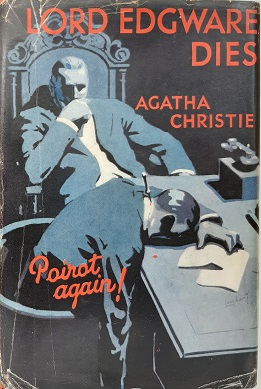
Lord Edgware Dies is a work of detective fiction by British writer Agatha Christie, published in the UK by the Collins Crime Club in September 1933 and in the US by Dodd, Mead and Company later in the same year under the title of Thirteen at Dinner. Before its book publication, the novel was serialised in six issues of The American Magazine as 13 For Dinner.

Captain Arthur J. M. Hastings, OBE, is a fictional character created by Agatha Christie as the companion-chronicler and best friend of the Belgian detective, Hercule Poirot. He is first introduced in Christie's 1920 novel The Mysterious Affair at Styles and appears as a character in seven other Poirot novels, including the final one Curtain: Poirot's Last Case (1975), along with a play and many short stories. He is also the narrator of several of them.
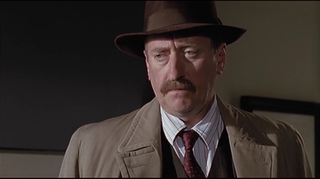
Inspector James Japp is a fictional character who appears in several of Agatha Christie's novels featuring Hercule Poirot.

After the Funeral is a work of detective fiction by Agatha Christie and first published in the US by Dodd, Mead and Company in March 1953 under the title of Funerals are Fatal and in UK by the Collins Crime Club on 18 May of the same year under Christie's original title. The US edition retailed at $2.50 and the UK edition at ten shillings and sixpence (10/6).

Peril at End House is a work of detective fiction by British writer Agatha Christie, first published in the US by the Dodd, Mead and Company in February 1932 and in the UK by the Collins Crime Club in March of the same year. The US edition retailed at $2.00 and the UK edition at seven shillings and sixpence (7/6).
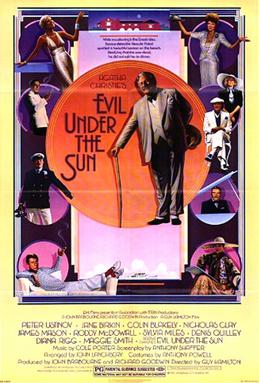
Evil Under the Sun is a 1982 British mystery film based on the 1941 novel of the same name by Agatha Christie and directed by Guy Hamilton. Peter Ustinov stars as Hercule Poirot, the Belgian detective whom he had previously played in Death on the Nile (1978).

Murder on the Orient Express is a 1974 British mystery film directed by Sidney Lumet, produced by John Brabourne and Richard Goodwin, and based on the 1934 novel of the same name by Agatha Christie.

Three Blind Mice and Other Stories is a collection of short stories written by Agatha Christie, first published in the US by Dodd, Mead and Company in 1950. The first edition retailed at $2.50.
This page details the other fictional characters created by Agatha Christie in her stories about the Belgian detective, Hercule Poirot.

The Alphabet Murders is a 1965 British detective film directed by Frank Tashlin and starring Tony Randall as Hercule Poirot. It is based on the 1936 novel The A.B.C. Murders by Agatha Christie.

Black Coffee is a play by the British crime-fiction author Agatha Christie (1890–1976) which was produced initially in 1930. The first piece that Christie wrote for the stage, it launched a successful second career for her as a playwright. In the play, a scientist discovers that someone in his household has stolen the formula for an explosive. The scientist calls Hercule Poirot to investigate, but is murdered just as Poirot arrives with Hastings and Inspector Japp.
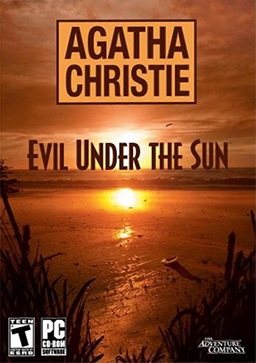
Agatha Christie: Evil Under the Sun is a video game by AWE Productions released for the Windows and Nintendo Wii, and is the third installment of The Adventure Company's Agatha Christie series based on Agatha Christie's 1941 novel Evil Under the Sun. The Windows version was released in 2007, and the Wii version one year later.

Thirteen at Dinner is a 1985 British-American made-for-television mystery film featuring the Belgian detective Hercule Poirot. Adapted by Rod Browning from the 1933 Agatha Christie novel Lord Edgware Dies, it was directed by Lou Antonio and starred Peter Ustinov, Faye Dunaway, Jonathan Cecil, Diane Keen, Bill Nighy and David Suchet, who was later to play Poirot in the long-running television series entitled Agatha Christie's Poirot. The film first aired on CBS Television on October 18, 1985.
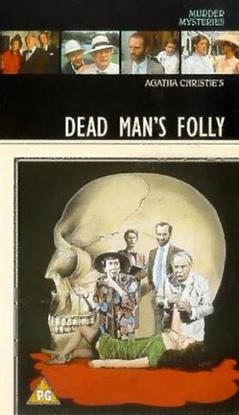
Dead Man's Folly is a 1986 British-American made-for-television mystery film featuring Agatha Christie's Belgian detective Hercule Poirot. It is based on Christie's 1956 novel Dead Man's Folly. The film was directed by Clive Donner and starred Peter Ustinov as Poirot.

Lord Edgware Dies is a 1934 British mystery film directed by Henry Edwards and starring Austin Trevor, Jane Carr, and Richard Cooper. The film was based on the 1933 Agatha Christie novel Lord Edgware Dies.
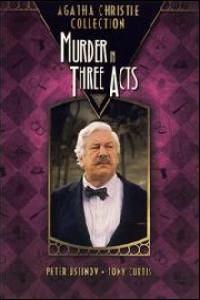
Murder in Three Acts is a British-American made-for-television mystery film of 1986 produced by Warner Bros. Television, featuring Peter Ustinov as Agatha Christie's detective Hercule Poirot. Directed by Gary Nelson, it co-starred Jonathan Cecil as Hastings, Tony Curtis, and Emma Samms.
In Agatha Christie's mystery novels, several characters cross over different sagas, creating a fictional universe in which most of her stories are set. This article has one table to summarize the novels with characters who occur in other Christie novels; the table is titled Crossovers by Christie. There is brief mention of characters crossing over in adaptations of the novels. Her publications, both novels and short stories, are then listed by main detective, in order of publication. Some stories or novels authorised by the estate of Agatha Christie, using the characters she created, and written long after Agatha Christie died, are included in the lists.
Lists of adaptations of the works of Agatha Christie:

The Monogram Murders is a 2014 mystery novel by British writer Sophie Hannah featuring characters created by Agatha Christie. It is the first in Hannah's series of Hercule Poirot books, continuation novels sanctioned by the estate of Agatha Christie. The novel was followed by Closed Casket (2016), The Mystery of Three Quarters (2018), and The Killings at Kingfisher Hill (2020).

Closed Casket is a work of detective fiction by British writer Sophie Hannah, featuring Agatha Christie's Hercule Poirot. Hannah is the first author to have been authorised by the Christie estate to write new stories for her characters. Hannah's work closely resembles the Golden Age of Detective Fiction in its structure and tropes. Closed Casket even includes a plan of the house in which the murder takes place; such plans were sometimes used in Golden Age novels to aid the reader in their solving of the mystery puzzle.

















